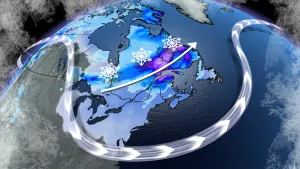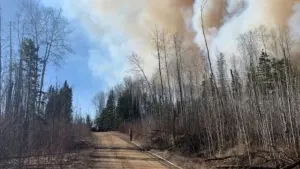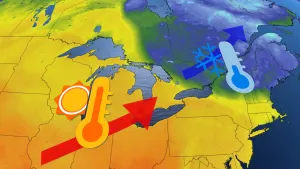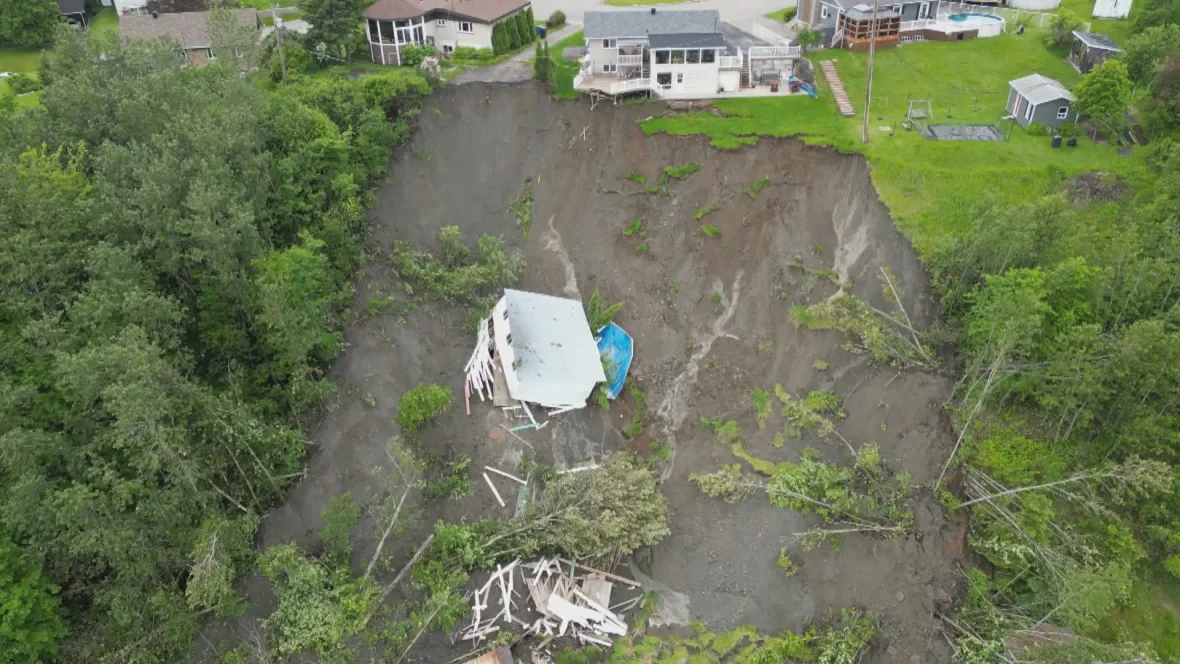
Heavy rain caused Saguenay landslide but area had existing faults, says expert
--
The landslide that destroyed a house and damaged another in Saguenay, Que., on June 13 was the result of heavy rainfall on an already faulty clay terrain, experts from Quebec's Ministry of Transport have determined.
"A landslide of this magnitude in these conditions, it's an exceptional event," said geotechnical engineer and soil expert Denis Demers, who works for the ministry.
The slide has caused government officials to issue an evacuation order for some 76 houses in La Baie borough in Saguenay, a city about 240 kilometres north of Quebec City, due to the high risk of further slides in the area.
Demers explained that while about 60 per cent of landslides in Quebec happen in the spring, when there is a lot of rain and water seeps into the ground, they normally take place in areas where there is a creek or a river.
But the hill where this landslide happened didn't have any such waterways.
Instead, Demers said what happened is that the region was struck by some 157 millimetres of rain in the first two weeks of June — nearly double what the region usually gets during that period.
As a result the soil, which is made of clay, quickly became unstable, he said.
SEE ALSO: Lightning strike forces multiple families from their homes in Montreal
The expert said it took "a tremendous amount of energy" for this to happen because compact clay is usually very solid. He compared the situation to a crunchy apple that quickly becomes pureed when it goes through a blender.
Demers explained that nowadays people wouldn't be allowed to build new houses on this type of soil and terrain, but he said the houses inside the evacuation zone were built many decades ago before the risks were known.
LANDLSIDE WAS EXPECTED
Residents who lived at the top of the hill where the landslide took place alerted the City of Saguenay of ground faults in their backyard in the week right before Easter.
Quebec's Ministry of Public Safety quickly determined that the area was unsafe for living and issued an evacuation order for five houses, including the house that fell in the landslide.
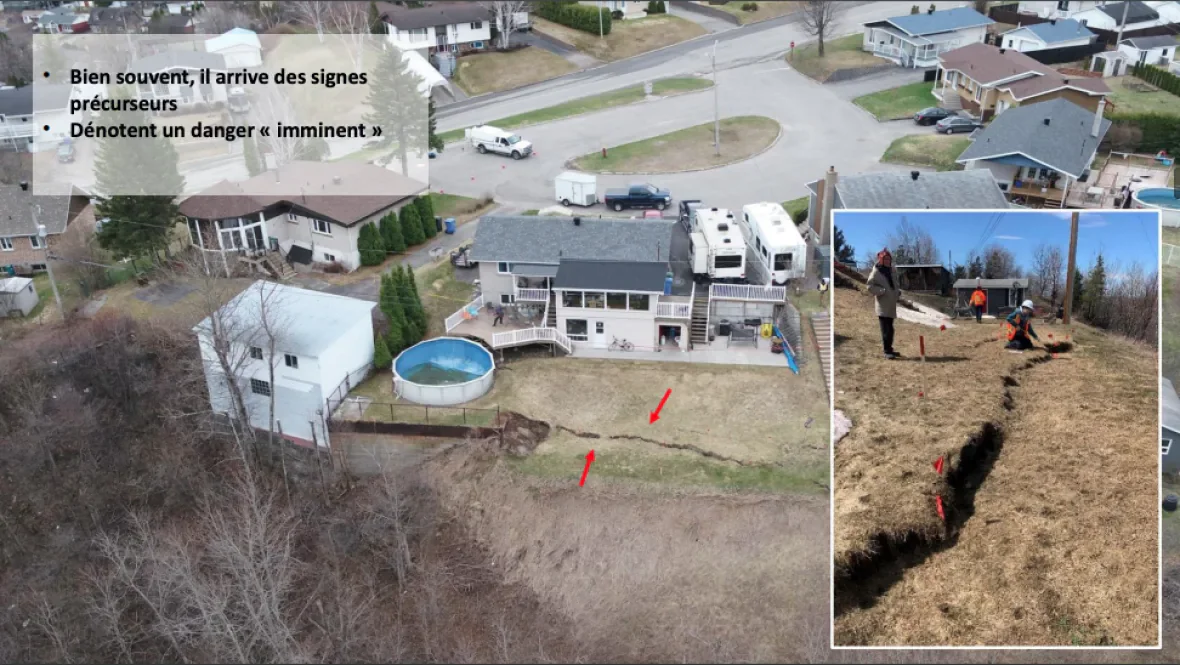
Pictures shown during a presentation on the situation in Saguenay show the ground faults noticed by residents in April, a few months before the landslide. (Submitted by Quebec Ministry of Transport)
"These people would be dead if we hadn't done a preventative evacuation," said Demers. "In those types of situations we don't take any chances."
The ministry also built a preventative cement wall at the bottom of slope where the ground faults were, which stopped the soil from sliding even further down and destroying more houses, the engineer said.
CRITICAL CONDITION
The area remains in a critical condition, according to Demers. He said there is a high risk that bouts of land as large as 15 metres will detach from the hill and slide down the slope.
To avoid that from happening, the government plans to demolish at least five of the nearby houses and flatten the slope to prevent more slides.
Demers said the work required to secure the area could take an estimated eight weeks, but said the government still needed to do more tests in order to provide a specific timeline.
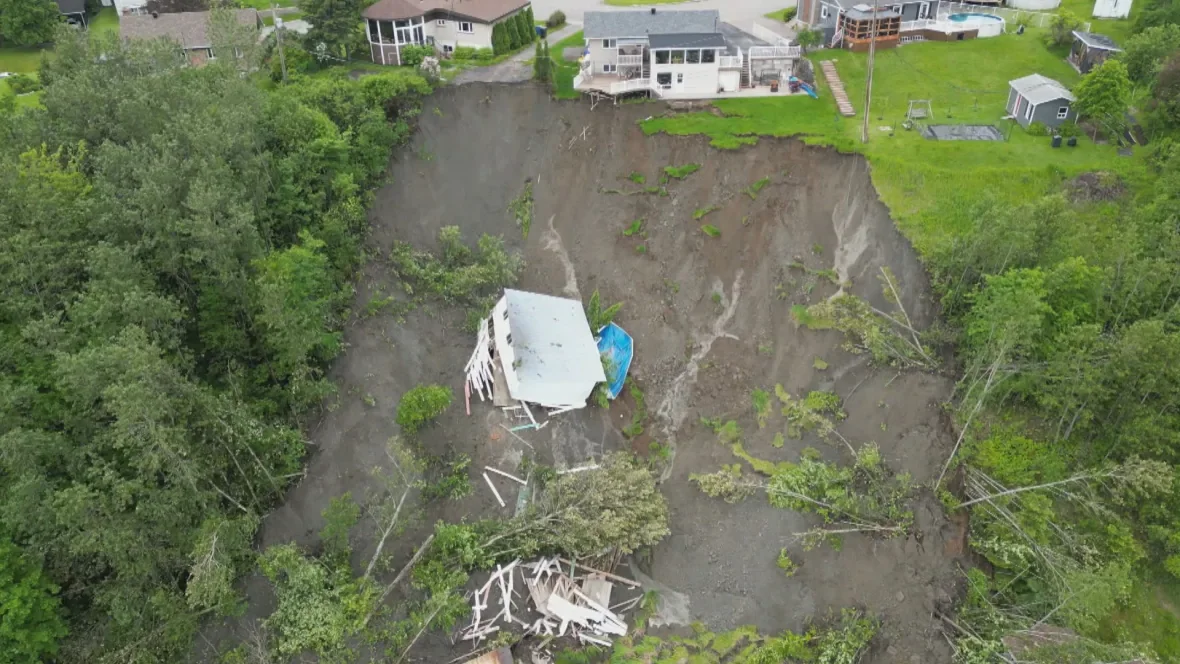
An aerial image shows the extent of the landslide in Saguenay's La Baie neighbourhood. (Radio-Canada)
Saguenay Mayor Julie Dufour said the affected residents were warned about the situation in a briefing with government officials on Wednesday.
"We spoke about anxiety. We spoke about fear. I am incredibly proud of the people in my beautiful region," she said.
READ MORE: Make the sun work for YOU with these solar powered gadgets
On Wednesday morning Quebec Premier François Legault announced that residents who have or will lose their homes will be eligible to receive up to $385,000 to rebuild their homes, and additional funding to cover the cost of furniture and appliances.
Some financial assistance is also provided for residents who are waiting to return to their residences.
WATCH BELOW: QUEBEC HOMES BURN DOWN FROM LIGHTNING STRIKE DURING STORMS
This article was originally published for CBC News.






